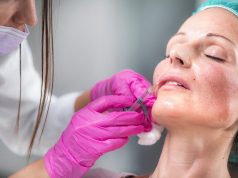Patients bothered by specific adverse effects had lower satisfaction with nose and nostrils
TUESDAY, Dec. 1, 2015 (HealthDay News) — The FACE-Q rhinoplasty scales can be used to assess patient perspective of rhinoplasty outcome, according to research published online Nov. 25 in JAMA Facial Plastic Surgery.
Anne F. Klassen, D.Phil., from McMaster University in Hamilton, Canada, and colleagues describe the development and psychiatric evaluation of the FACE-Q scales and adverse effects checklist designed to assess rhinoplasty outcomes. One hundred fifty-eight patients completed a questionnaire. Psychometric methods were used to select the most clinically sensitive items for inclusion and assess reliability, validity, and ability to detect clinical change.
The researchers found that the skin of the nose looking thick or swollen was the most common adverse effect. Based on Rasch measurement theory analysis they refined a 10-item Satisfaction with Nose Scale and a 5-item Satisfaction with Nostrils Scale. The person separation index and Cronbach α were 0.91 and 0.96, respectively, for the Satisfaction with Nose Scale, and 0.89 and 0.96, respectively, for the Satisfaction with Nostrils Scale. Ordered thresholds and good item fit were seen for all items. In participants bothered by specific adverse effects, satisfaction with the nose and nostrils was incrementally lower. Satisfaction was higher after versus before surgery on the Satisfaction with Nose Scale, Satisfaction with Nostril scale, and three additional FACE-Q scales (P < 0.001 for all).
“A FACE-Q scales rhinoplasty module can be used in clinical practice, research, and quality improvement to incorporate the patient perspective in outcome assessments,” the authors write.
Copyright © 2015 HealthDay. All rights reserved.








